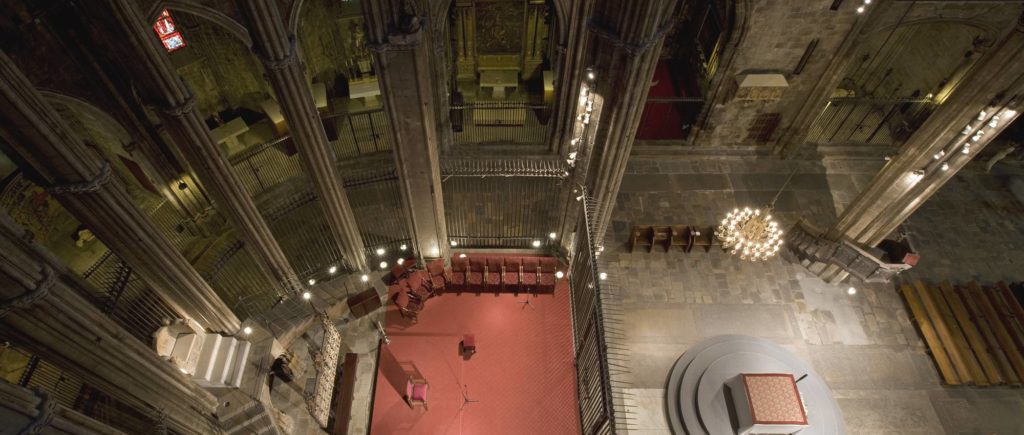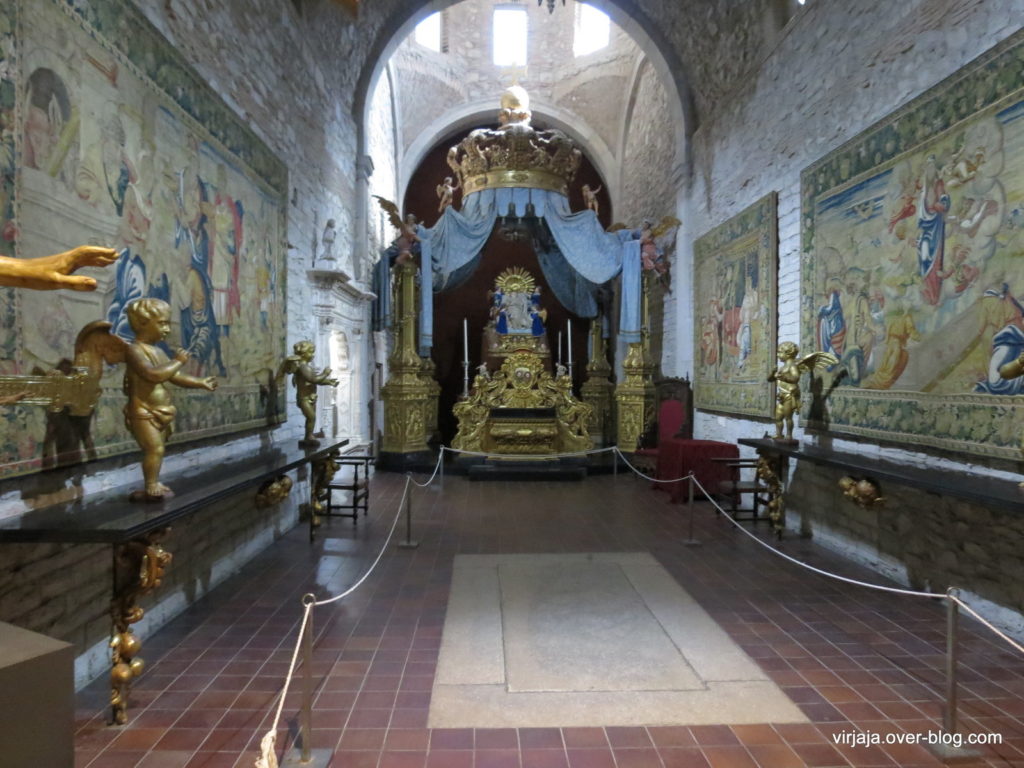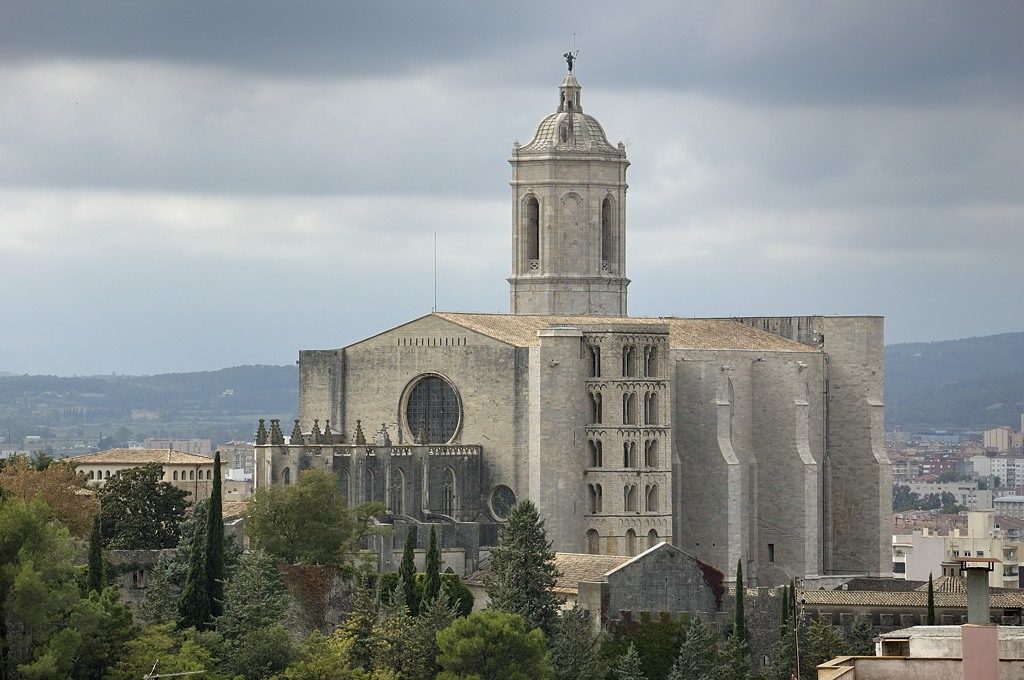
The Cathedral of Girona is located in the highest point of the city and is perched on the highest part of the city, at the top of a monumental staircase, the cathedral of Girona impresses the visitor at the first sight . It is an imposing monument, on which twenty-five architects have worked since the eleventh century.
The cathedral of Girona is built on the highest point and thus dominates the city. Dedicated to Sainte-Marie, its construction began in the eleventh century and ended in the eighteenth century. Early Romanesque, the construction of the cathedral of Girona passed in Gothic style in the thirteenth century. The Gothic part includes the second largest nave in the world, all styles combined, after the Basilica of St. Peter in Rome. Its elevation is 35 meters.
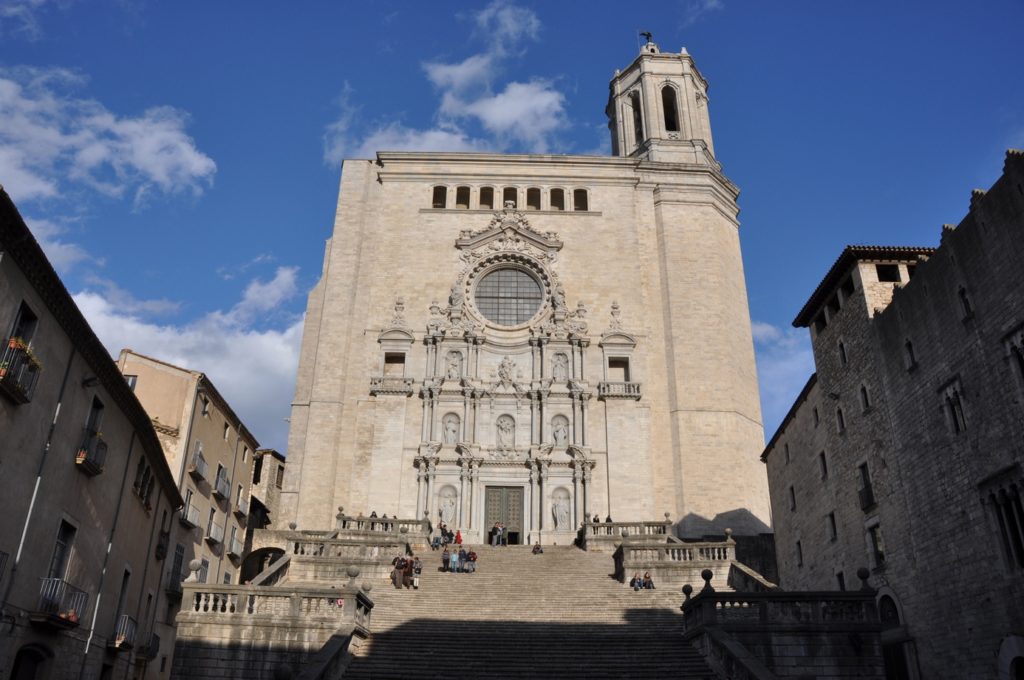
As you walk from the Cathedral Square to the west, the building offers a breathtaking view. It is a medieval skyscraper. You can see the facade and the belfry above a large staircase of 93 steps and with terraces with six sides and decorative railings. The staircase is one of the largest of the baroque art.
The Church
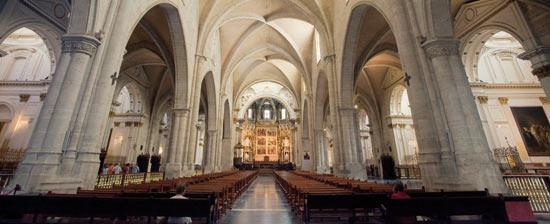
The church has the widest gothic nave in the world, almost 23 m. It is 35 meters high and was built between the 14th and the end of the 16th century. It has four rafts with their big keystones. At the lower level there are several chapels, and above is the stained glass level. A magnificent episcopal seat of white marble of the Pyrenees behind the main altar of the cathedral is a must-see. Originally Romanesque, rebuilt in the Gothic period, this venerable seat is called “Charlemagne’s chair”. According to legend, every couple who sits there together will be married in the year, and any man who sits there alone is bound to remain single. The altarpiece of the high altar in embossed silver of the 14th century, overlaid with enamels and precious stones, is one of the jewels of the Spanish goldsmith. The religious architectural has the widest gothic ship in the world – about 23 meters – and basically meets the Romanesque and Gothic styles, with also baroque and contemporary elements.
The Treasure of Girona Cathedral
The treasure of Girona Cathedral contains remarkable works of religious art of great value, such as the codex of Beatus (Xe) or the tapestry of creation.
The Beatus of Girona is an illuminated manuscript, notably the Apocalypse Comments written in the eighth century by the monk Beatus de Liébana. Written and painted between 970 and 975, the manuscript contains 160 miniatures painted by the monk Emeterius and by the nun Ende, inspired by manuscripts produced in the Carolingian period.
Practical Information :
The Cultural Visit includes the Nave, the Treasury and the Cloister
Ticket price: € 7 (with audio-guide), under 16 years old: € 1.20, under 7: free
FREE visit on Sunday (from 10 to 14h only Treasury and Cloister – see cult) (audio-guide: 1 €)
BUSINESS HOURS
April – October: from 10 to 20h
November – March: from 10 to 19h
Hours of worship (cultural visit impossible)
Saturdays and eves of religious celebrations: from 16: 30h
Sundays and holidays: from 10 to 14h
The cultural visit does not take place on Christmas, January 1st and 6th and Easter Sunday
Ticket revenues are for the maintenance, conservation and restoration of the Cathedral.
